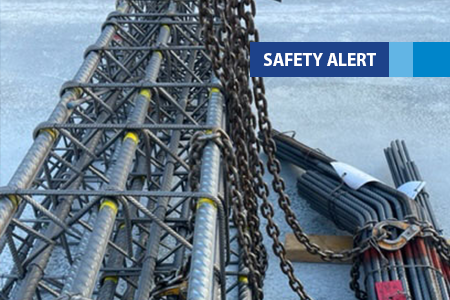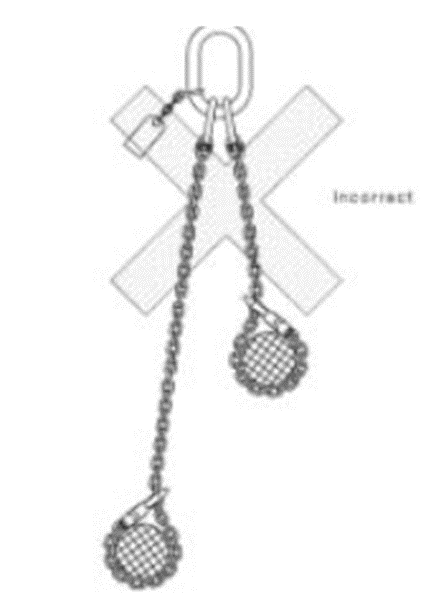
28 February 2023
A crane crew in South Australia has been issued a prohibition notice after piggy backing a load of reinforcing bars in what is known as a high-low lift.
The incident has sparked a SafeWork SA warning about the dangers of lifting multiple loads at different heights.
SafeWork SA inspectors attended a construction project on 8 February 2023 and observed a crane crew dogman slinging reo bar bundles at different heights in a high-low lift.
The principal contractor was issued a prohibition notice due to the imminent risk of the reo bar bundles:
- being suspended over a person when rigging or landing the load
- not being lifted or suspended in a way that ensures it remains under control during the activity.
A high-low lift is where multiple loads are slung by a crane in a vertical configuration. They are also known as ‘Christmas tree lifts’ or ‘Piggy Backing Load’ or ‘Multiple Vertical Lifts’.
This method of lifting has traditionally been used in the past to increase productivity by reducing the number of crane lifts required to move materials.

The two reo bar loads slung in the recent incident.
The use of high-low lifts poses an increased risk of injury to persons (predominately the dogman) working under a suspended load whilst attaching or landing the next load. The risks are increased due to the requirement of workers to be physically positioned under the top load during launch, landing and recovery.
Regulation 36 of the Work Health and Safety Regulation 2012 (SA) stipulates the hierarchy of control measures that must be followed when managing a workplace hazard or risk.
The prohibition of high-low lifts is supported by regulation 219 where operators must ensure that loads are lifted or suspended in a way that ensures the load remains under control during the activity and, so far as is reasonably practicable, that no loads are suspended or travel over a person unless the plant is specifically designed for that purpose.
Lifting operations are only conducted by High-Risk Work Licence holders. Licence holders perform the task using appropriate control measures and under site specific safe work method statements (SWMS).
Australian Standard AS3775.2:2014 stipulates that dual independent loads or separately slung loaded slings are NOT to be used where the loads are slung to different heights.
SafeWork SA Acting Executive Director Glenn Farrell said lifting multiple loads in this manner creates unnecessary exposure to the risk of injury, particularly to the dogman, due to being under a suspended load when applying slinging techniques.
‘Businesses must ensure they meet the requirements of ensuring nobody is under a suspended load and that all loads are appropriately controlled – a high-low lift does not meet these requirements,’ he said.
‘Therefore, the business and crane operator would be in breach of legislation by suspending the load over the dogman.’
.
A graphic depicting a high-low lift where bundles are slung at different height




